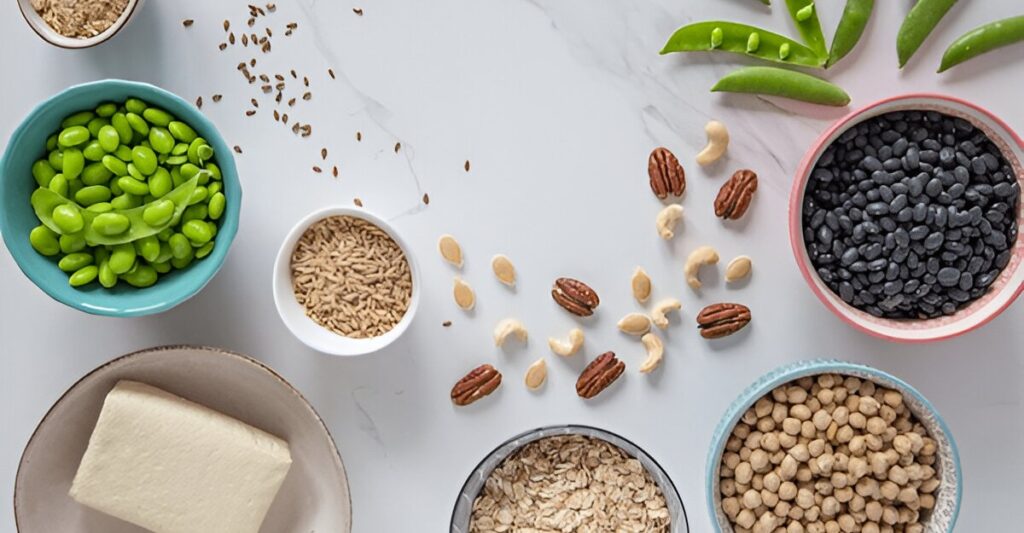Meal planning is a game-changer for anyone looking to eat healthier, save time, and reduce stress around food. Whether you’re a busy parent, a fitness enthusiast, or someone trying to stick to a budget, learning the basics of meal planning can transform your daily routine. But if you’re new to it, the idea of planning meals for the week might feel daunting. Don’t worry—Meal Planning 101 is here to guide you with simple, actionable steps to get started. In this article, we’ll break down what meal planning is, why it’s worth your time, and how to begin with confidence.
What Is Meal Planning?
Meal planning is the process of deciding what you’ll eat for meals and snacks over a set period—usually a week—and organizing the ingredients, prep, and cooking to make it happen. It’s like creating a roadmap for your kitchen, ensuring you have nutritious, delicious meals ready when you need them. Meal planning can be as detailed or as flexible as you want, tailored to your lifestyle, dietary preferences, and goals.
The goal of meal planning is to take the guesswork out of eating, helping you stay consistent with healthy choices while saving time and money.
Why Meal Planning Matters
Before diving into Meal Planning 101, let’s explore why it’s a worthwhile habit:
- Saves Time: Planning meals in advance reduces last-minute cooking or takeout runs, freeing up your schedule.
- Promotes Healthy Eating: With a plan, you’re more likely to choose nutrient-dense foods and avoid processed convenience items.
- Cuts Food Waste: By buying only what you need, you’ll reduce spoiled ingredients and save money.
- Reduces Stress: Knowing what’s for dinner eliminates the daily “what’s to eat?” dilemma.
- Supports Goals: Whether it’s weight loss, muscle gain, or better energy, meal planning aligns your diet with your objectives.
With these benefits in mind, let’s walk through the steps to start meal planning like a pro.
Meal Planning 101: Where to Start
You don’t need to be a chef or a nutritionist to master meal planning. These beginner-friendly steps will help you build a system that works for you.
1. Define Your Goals
The first step in Meal Planning 101 is understanding why you’re planning. Your goals will shape your approach. Ask yourself:
- Are you aiming to eat healthier with more vegetables and whole foods?
- Do you want to save money by avoiding takeout?
- Are you training for a fitness goal that requires specific nutrients?
- Do you need quick meals for a busy schedule?
Clear goals help you prioritize meals that align with your needs, whether it’s high-protein dishes for workouts or budget-friendly recipes for family dinners.
2. Assess Your Schedule
Your weekly schedule determines how much time you can dedicate to cooking and prepping. Take a look at your calendar and note:
- Which days are busiest, requiring quick meals or pre-made options?
- When do you have time to cook or prep ingredients?
- Are there days you’ll eat out or have social events?
For example, if Wednesday evenings are packed, plan a slow-cooker meal or a pre-prepped salad for that day. Tailoring your plan to your schedule is key to successful meal planning.
3. Choose Your Meals
Start by planning 3–5 dinners for the week, as these are often the most challenging meals to prepare. Then, add simple breakfasts, lunches, and snacks as needed. To make meal planning easier:
- Pick Familiar Favorites: Choose recipes you already know and love to build confidence.
- Incorporate Variety: Include different proteins (chicken, fish, beans), carbs (rice, pasta, sweet potatoes), and veggies for nutrient diversity.
- Plan for Leftovers: Cook extra portions of dinner to repurpose as lunch the next day.
- Keep It Simple: Stick to recipes with minimal ingredients or quick prep times, like sheet-pan chicken and veggies or stir-fries.
A sample weekly dinner plan might include:
- Monday: Grilled chicken with quinoa and roasted broccoli
- Tuesday: Lentil soup with whole-grain bread
- Wednesday: Pre-made salad with tuna and avocado
- Thursday: Beef stir-fry with brown rice
- Friday: Baked salmon with sweet potato wedges and asparagus
4. Create a Shopping List
Once you’ve chosen your meals, make a shopping list of all the ingredients you’ll need. Organize it by grocery store sections (produce, proteins, pantry staples) to save time while shopping. Check your kitchen first to avoid buying duplicates, and stick to your list to prevent impulse purchases.
- Pro Tip: Include versatile ingredients like eggs, spinach, or rice that can be used in multiple meals to stretch your budget.
5. Prep in Advance
Meal prep is the secret sauce of meal planning. Set aside 1–2 hours (e.g., Sunday afternoon) to prepare components of your meals, such as:
- Chopping vegetables
- Cooking grains or proteins in bulk
- Portioning snacks like nuts or fruit
- Assembling make-ahead meals like casseroles or mason jar salads
Store prepped ingredients in airtight containers in the fridge or freezer for easy access during the week. For example, pre-cooked chicken can be used in salads, wraps, or stir-fries.
6. Use Tools to Stay Organized
Meal planning doesn’t have to be high-tech, but tools can simplify the process:
- Notebooks or Planners: Write your meal plan and shopping list in a dedicated notebook or use a printable template.
- Apps: Apps like Mealime, Paprika, or Plan to Eat offer recipes, planning tools, and grocery lists.
- Calendar: Add your meal plan to a digital or wall calendar to keep it visible.
- Storage Containers: Invest in quality containers to keep prepped meals fresh and organized.
Choose tools that fit your style to make meal planning a seamless part of your routine.
7. Start Small and Be Flexible
If meal planning feels overwhelming, start small. Plan just 2–3 meals for the week and build from there. Be flexible—life happens, and plans may change. If you end up eating out one night, shift your planned meal to another day or freeze leftovers. The goal is consistency, not perfection.
Tips for Meal Planning Success
To make meal planning a lasting habit, try these strategies:
- Batch Cook: Make large batches of versatile dishes like chili or roasted veggies to use in multiple meals.
- Mix and Match: Create “bowl” meals by combining prepped proteins, carbs, and veggies with different sauces or spices for variety.
- Involve Family: Get input from household members to ensure everyone enjoys the meals.
- Try Theme Nights: Simplify planning with themes like “Taco Tuesday” or “Meatless Monday.”
- Review and Adjust: At the end of each week, reflect on what worked and tweak your plan for the next week.
Common Meal Planning Mistakes to Avoid
Avoid these pitfalls to keep meal planning stress-free:
- Overcomplicating Recipes: Stick to simple dishes with 5–10 ingredients, especially as a beginner.
- Ignoring Leftovers: Plan to use leftovers to save time and reduce waste.
- Skipping Prep: Without prep, you’re more likely to fall back on takeout during busy moments.
- Not Accounting for Cravings: Include a treat or flexible meal to satisfy cravings without derailing your plan.
How Meal Planning Fits Into a Healthy Lifestyle
Meal planning is more than just a time-saver—it’s a tool to support your overall wellness. Pair it with habits like:
- Balanced Nutrition: Use meal planning to ensure each meal includes protein, carbs, healthy fats, and veggies.
- Mindful Eating: Plan meals you enjoy to savor them without distractions.
- Fitness Goals: Align your plan with workout needs, like high-protein meals for muscle recovery.
- Budgeting: Plan meals around sales or seasonal produce to save money.
Conclusion
Meal Planning 101 is all about starting simple, staying organized, and building a system that works for you. By defining your goals, planning meals around your schedule, and prepping in advance, you’ll save time, eat healthier, and feel in control of your diet. Whether you’re aiming to boost nutrition, stick to a budget, or reduce kitchen stress, meal planning is the key to success. Start with a few meals, experiment with recipes, and watch how this small habit transforms your life. Here’s to delicious, stress-free eating!


